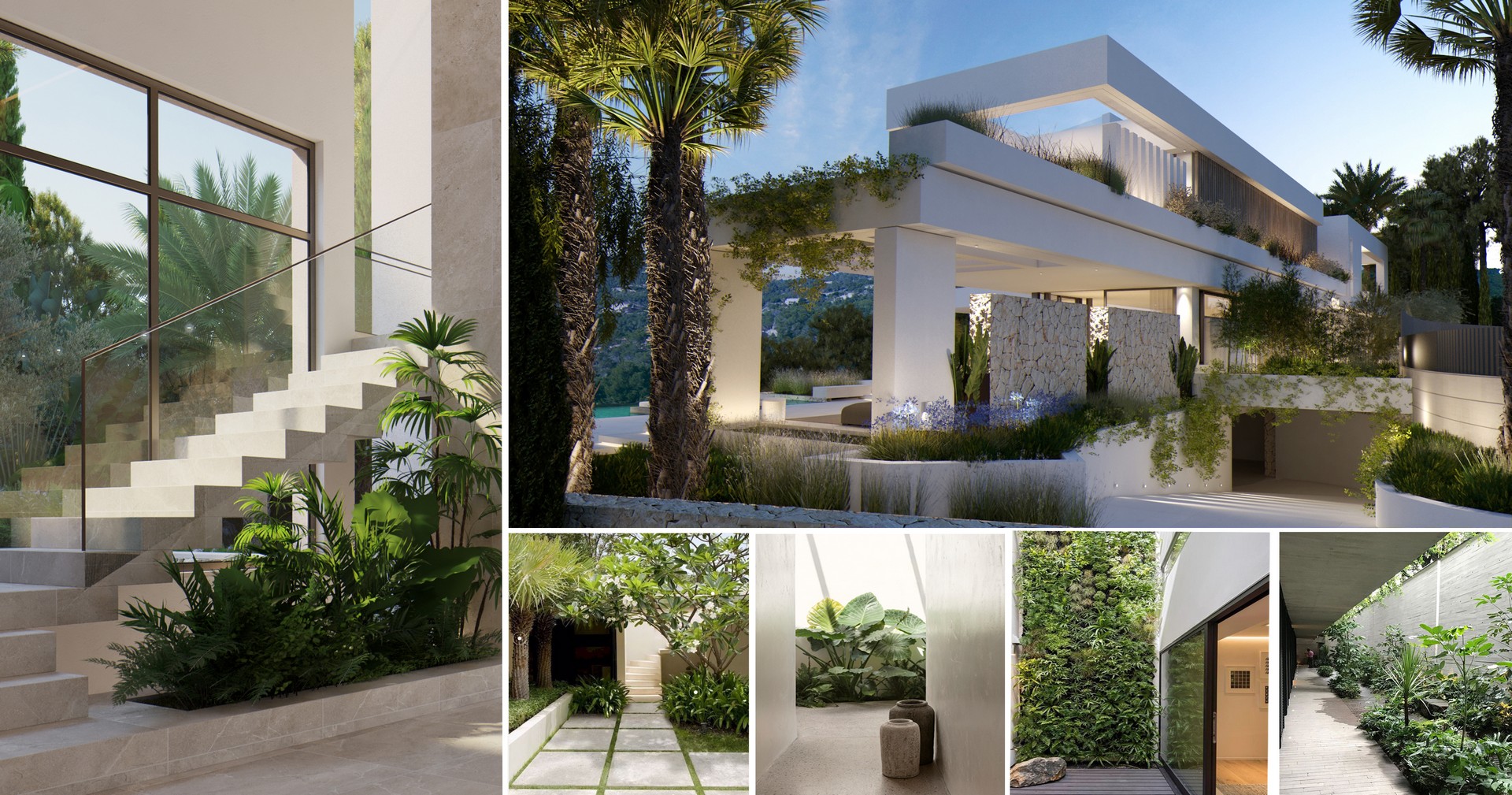Sustainable architecture in Mallorca is becoming increasingly significant. More and more projects are incorporating greenery not merely as decoration, but as an essential part of the architectural concept. In this conversation, architects Anna Tarragona and Lars Höhne explain how they weave nature into their villas, creating a dialogue between contemporary design and the Mediterranean way of life.
Edith Minkner: What role does greenery play in your projects?
Anna Tarragona: From the very outset of each project, we consider the role of greenery. In Mallorca’s Mediterranean climate, the relationship between indoors and outdoors is fundamental. We aim to create an open and natural atmosphere, one that extends into the interiors through daylight, natural materials and carefully curated planting schemes.
Edith Minkner: And what do plants contribute inside a house?
Lars Höhne: Greenery serves several purposes in architecture. It brings beauty, serenity and a welcoming sense of calm. It improves environmental comfort, adds freshness and vitality. And because we always connect greenery with natural light, we achieve distinctive effects of shade, colour and texture.
Anna Tarragona: This allows us to stage unexpected scenes in places where one might least expect them – in garages, with vertical gardens along basement ramps, or within circulation spaces. Even in semi-basement levels, greenery can enrich staircases and corridors, and bring quality to a gym or a yoga studio.
Edith Minkner: In many of your projects we see planters with skylights that transform basements into high-quality spaces. Is this complex to achieve?
Lars Höhne: It requires a rigorous approach, as it means integrating additional elements into the architectural whole. Bringing daylight down to a lower level gives us the opportunity to create lush planting areas with a remarkable sense of spatial quality. Skylights, natural finishes and intelligent irrigation systems all require extra effort, but the result is a continuous and coherent design that enhances every space in the house.
Edith Minkner: What are the main challenges when integrating greenery indoors?
Anna Tarragona: The greatest challenge is always access to natural light. Beyond that, technology provides many solutions – automation, remote control, sensors… The priority is to keep maintenance to a minimum. And of course, selecting plants that not only thrive, but also create the aesthetic atmosphere we want to achieve.
Edith Minkner: Are there other elements you particularly enjoy using?
Anna Tarragona: We place great importance on upper-level terraces, where we seek to create the feeling of a small private garden – a natural extension of the interior, offering intimacy and a sense of retreat.
Lars Höhne: Green roofs are another aspect. They may not be used as living spaces, but they provide significant environmental benefits and, when the greenery is visible above the roofline, they lend the building a distinctive architectural character. And when a roof becomes a true roof garden, it turns into a very special space.
Edith Minkner: Do you have a favourite plant?
Lars Höhne: Olive trees are a Mallorcan classic. They require little maintenance, take up little root space, and are perfect for planters on terraces. They embody the Mediterranean spirit, and with older specimens – almost sculptural in character – you gain a shaded spot that invites you to pause. Choosing the right olive tree for each location together with our clients is always a special moment.
Anna Tarragona: We are also fond of the Monstera Deliziosa, often called Costilla de Adán in Spanish. It’s an exuberant plant with large ornamental leaves, widely used in traditional Mallorcan patios. Its bold presence makes it a feature we often bring into our projects.
